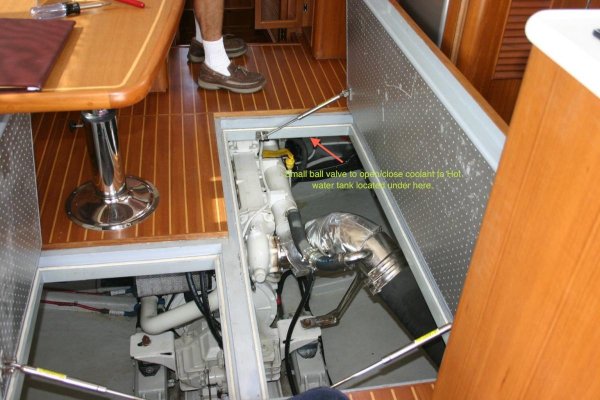Hi all,
Ive looked around on here and on the www. But can't seem to find the answer so just chucking up a thread.
My question is In relation to raw water (sea water) cooling and coolant engine fluids.
I understand that in a closed system like I have, the raw water is sucked up into a raw water filter via a pump, it then passes through the pump into one oil cooler, up into the heat exchanger, into the exhaust then out the back while the engine coolant is a closed system and cooled in the heat exchanger by the sea water so to the oil coolers.
Now What i want to know is, is there rule of thumb for where the raw water goes first? Is it better to go in to the heat exchanger first then to the oil coolers or into the oil coolers first then to the heat exchanger?
I'm at that point of my boat build where the engine, heat exchangers and oil coolers are all rebuilt and getting ready to install it into the boat so am curious as to what the "best practice" is for this as obviously the first cooler will get colder water than the rest and the more coolers the water goes through the warmer it gets .
The existing setup was through the pump, into the gearbox oil cooler, up to the heat exchanger then into the exhaust but as I had never been in the boat when it was running, I'm not sure if that way worked or not
Should it be a concern or is this something that doesn't really matter and should worry about something else?
What way do you guys/girls have it running?
Thanks in advance for your help.
Cheers
Hendo
Ive looked around on here and on the www. But can't seem to find the answer so just chucking up a thread.
My question is In relation to raw water (sea water) cooling and coolant engine fluids.
I understand that in a closed system like I have, the raw water is sucked up into a raw water filter via a pump, it then passes through the pump into one oil cooler, up into the heat exchanger, into the exhaust then out the back while the engine coolant is a closed system and cooled in the heat exchanger by the sea water so to the oil coolers.
Now What i want to know is, is there rule of thumb for where the raw water goes first? Is it better to go in to the heat exchanger first then to the oil coolers or into the oil coolers first then to the heat exchanger?
I'm at that point of my boat build where the engine, heat exchangers and oil coolers are all rebuilt and getting ready to install it into the boat so am curious as to what the "best practice" is for this as obviously the first cooler will get colder water than the rest and the more coolers the water goes through the warmer it gets .
The existing setup was through the pump, into the gearbox oil cooler, up to the heat exchanger then into the exhaust but as I had never been in the boat when it was running, I'm not sure if that way worked or not
Should it be a concern or is this something that doesn't really matter and should worry about something else?
What way do you guys/girls have it running?
Thanks in advance for your help.
Cheers
Hendo
Last edited:


